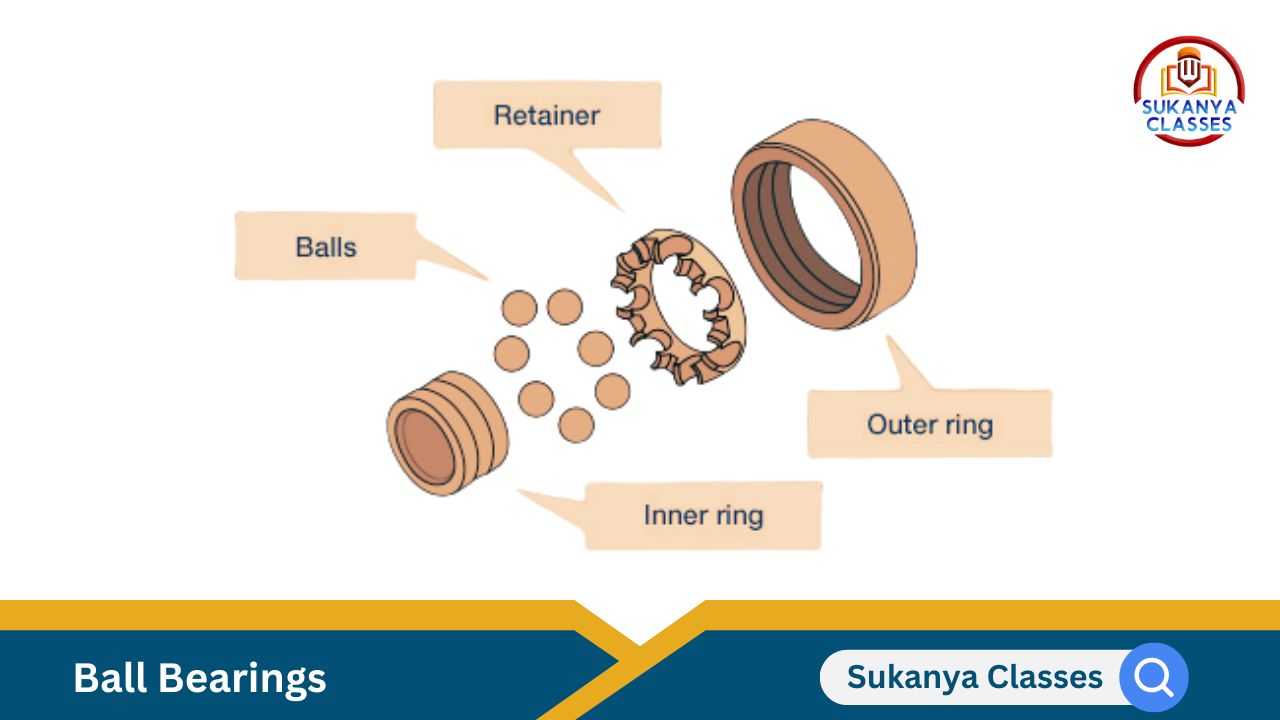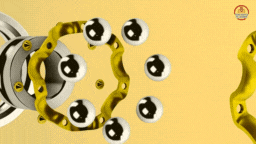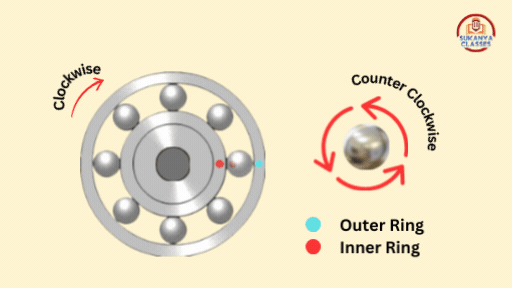Friction understanding: The purpose of ball bearings


Friction and the purpose of ball bearings
We constantly come into contact with friction, whether it's in the form of our shoes' hold on the ground or the motion of wheels on roadways. Understanding how friction affects motion is essential for students who are about to tackle the friction chapter in their class 8 syllabus. We'll go into great length on the use of ball bearings as one intriguing method of managing friction.
What are Ball Bearings?
Envision a system that minimizes friction and permits effortless rotation. This is the application for ball bearings. Two coaxial cylinders with tiny steel balls positioned between them make up a ball bearing. The function of these steel balls is to convert sliding friction into rolling friction.
Components of a Ball Bearing:

- Inner Ring/Race: This cylinder is typically fixed onto the axle.
- Outer Ring/Race: This cylinder is connected to the wheel or the rotating part.
- Steel Balls: These balls are placed between the two cylinders.
- Retainer (Cage or Separator): The retainer is a component that holds the steel balls evenly spaced apart within the bearing. It prevents the balls from colliding with each other, ensures consistent ball movement, and maintains the correct alignment of the balls relative to the inner and outer rings.
How do Ball Bearings Work?
Let's break down the mechanics:

- Rotational Movement: When the axle (attached to the inner cylinder) rotates, it causes the steel balls to roll.
- Direction of Rotation: Interestingly, the steel balls rotate in the opposite direction to the axle. For instance, if the axle rotates clockwise, the balls rotate counter clockwise.
- Steel Balls: These balls are placed between the two cylinders.
- Impact on Outer Cylinder: As the steel balls roll between the cylinders, they effectively enable the outer cylinder (connected to the wheel) to rotate smoothly in the same direction as the axle.
Advantages of Ball Bearings:

- Reduced Friction: By converting sliding friction to rolling friction, ball bearings significantly reduce the resistance encountered during rotation.
- Efficiency: Machines equipped with ball bearings operate more efficiently and require less energy to overcome frictional forces.
- Durability: They help minimize wear and tear on mechanical components, thereby extending the lifespan of machinery.
Ways to Increase Friction
Friction can be intentionally increased in various ways to enhance grip or stability:
- Surface Roughness: Making the surfaces in contact rough increases friction. This is why shoes have treads and tires have grooves.
- Increased Pressure: Pressing two surfaces together harder increases the force of friction. For example, pressing brake pads against a disc increases friction, aiding in stopping vehicles.
- Removing Lubrication: Lubricants reduce friction by forming a layer between surfaces. Removing or reducing lubrication increases friction, enhancing grip.
- Applying More Force: Increasing the force between surfaces increases friction. This can be seen when pushing objects together to create more frictional resistance.
- Increasing Mass: More massive objects have greater gravitational force, which increases the friction between surfaces in contact.
Ways to Reduce Friction
Conversely, friction can be reduced for smoother motion or efficiency:
- Polishing: Smoothing out surfaces reduces the microscopic bumps and valleys that create friction, thereby reducing resistance.
- Lubrication: Introducing a lubricant between surfaces forms a thin layer that reduces direct contact and friction. Common lubricants include oils, greases, and powders.
- Streamlining: Reducing air resistance by shaping objects aerodynamically (like a streamlined car) reduces frictional drag.
- Ball Bearings: As discussed, ball bearings convert sliding friction into rolling friction, effectively reducing resistance and enhancing smooth rotation.
- Air Cushions: Using a cushion of air between surfaces reduces friction. This principle is applied in hovercrafts and air hockey tables, where a thin layer of air supports the weight and reduces friction between the craft and the surface.
Practical Applications
Ball bearings are ubiquitous in modern machinery:
- Automotive Industry: They are used in vehicle wheels, engines, and transmissions.
- Industrial Machinery: They are essential in conveyor belts, turbines, and pumps.
- Household Appliances: From washing machines to ceiling fans, ball bearings play a crucial role in smooth operation.
- Ball Bearings: As discussed, ball bearings convert sliding friction into rolling friction, effectively reducing resistance and enhancing smooth rotation.
Frequently Asked Questions
What is friction?Friction is a force that opposes the relative motion or tendency of motion between two surfaces in contact.
Friction is caused by microscopic irregularities in the surfaces of objects that come into contact with each other.
Friction acts in the direction opposite to the direction of motion, slowing down objects and causing them to come to a stop.
There are several types of friction: static friction (when objects are at rest), kinetic friction (when objects are in motion), rolling friction (when one object rolls over another), and fluid friction (when an object moves through a fluid).
Friction can be increased by increasing the roughness of surfaces or by increasing the force pushing the surfaces together. It can be decreased by making surfaces smoother or by reducing the force pushing them together.
Friction is essential for walking, driving vehicles, writing with a pen, and many other everyday activities. It helps us grip surfaces and control movements.
Friction helps us walk without slipping, stop vehicles on roads, and hold objects without dropping them. It enables us to use tools effectively and perform various tasks.
Lubricants, such as oil and grease, create a thin layer between surfaces, reducing direct contact and friction. This allows parts to move smoothly and efficiently.
Friction is a friend because it allows us to perform tasks and use tools effectively. However, it can also waste energy by causing resistance and wear and tear on surfaces.
Friction affects sports by providing grip (e.g., shoes on a basketball court) and resistance (e.g., air resistance in cycling). It influences how objects move and interact during gameplay.
















0 comments